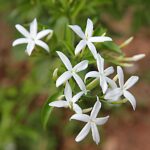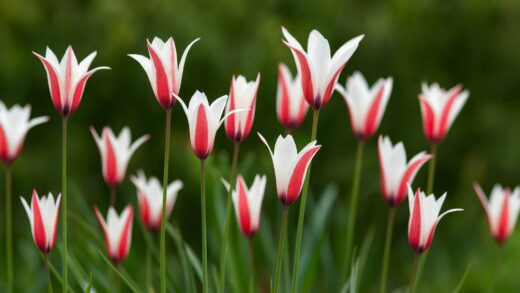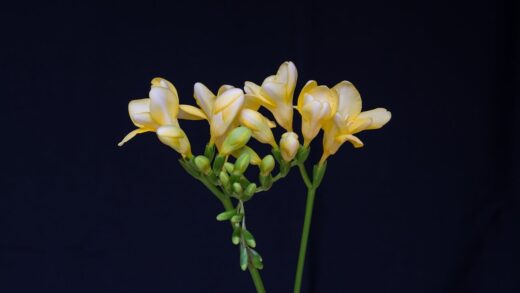Light is the fundamental source of energy for all plants, and for the sun-loving passion flower, it is perhaps the most critical environmental factor dictating its overall health and, most importantly, its ability to produce its magnificent, complex blooms. Originating in the bright, sun-drenched environments of tropical and subtropical regions, these vines are genetically programmed to seek out and thrive in high-light conditions. Providing inadequate light is one of the most common reasons for a passion flower’s failure to thrive and bloom in a cultivated setting. Therefore, a deep understanding of its specific light requirements is not just beneficial but absolutely essential for any gardener wishing to witness the full splendor of this exotic plant.
Passion flowers are, without exception, sun-loving plants. For optimal growth and prolific flowering, they require a location that provides at least six to eight hours of direct, bright sunlight each day. This ample supply of solar energy fuels the process of photosynthesis, which is how the plant creates the sugars and carbohydrates it needs to grow strong vines, develop healthy foliage, and, crucially, form and open its energy-intensive flowers. When deprived of sufficient light, the plant’s growth will be weak and leggy, with long gaps between the leaves, and it will produce few, if any, flowers.
The ideal placement for a passion flower is typically in a south-facing or west-facing position. A south-facing location will provide strong, consistent light throughout the day, while a west-facing spot will receive the intense afternoon sun. In regions with exceptionally hot and intense summer sun, some consideration should be given to providing a little protection during the peak heat of the afternoon. While they love sun, the foliage can sometimes be susceptible to scorch if exposed to extreme, unrelenting solar radiation combined with high temperatures.
It is also important to consider the quality of the light. Passion flowers benefit from full-spectrum light, which includes all the wavelengths of light that they use for photosynthesis. While direct outdoor sunlight is the best source, if you are growing your plant indoors, it is crucial to place it in the sunniest window possible. Even the brightest indoor location receives significantly less light than an outdoor spot, so maximizing its exposure is paramount. If natural light is insufficient, supplementing with a full-spectrum grow light can be a highly effective way to meet the plant’s energy needs.
The role of light in flowering
The relationship between light and flowering in Passiflora is direct and profound. The production of flowers is an incredibly energy-intensive process for any plant, and the intricate, multi-layered structure of a passion flower demands a particularly large investment of energy. This energy is generated almost exclusively through photosynthesis, a process that is entirely dependent on the availability of light. Therefore, a direct correlation exists: the more light the plant receives (up to its optimal level), the more energy it can produce, and the more flowers it will be ableto form and sustain.
More articles on this topic
Light also plays a crucial role in triggering the hormonal changes within the plant that initiate the flowering process. Many passion flower species are sensitive to photoperiod, which is the relative length of day and night. The long days and short nights of late spring and summer act as a natural signal for the plant to transition from vegetative growth (producing leaves and stems) to its reproductive phase (producing flowers). This is why a lack of blooms is a very common complaint for passion flowers that are grown in locations that are too shady or indoors without supplemental lighting.
The intensity of the light is just as important as the duration. The bright, direct sun provides the high-intensity light that passion flowers are adapted to. Diffused or indirect light, while sufficient for maintaining foliage on many houseplants, is often not intense enough to stimulate budding in Passiflora. A plant that appears healthy and green but refuses to bloom is often a plant that is receiving enough light to survive but not enough to thrive and reproduce. Relocating the plant to a sunnier position is frequently the single most effective solution to this problem.
Furthermore, the quality of the foliage, which is the plant’s primary photosynthetic engine, is also determined by light. In optimal light conditions, the leaves will be large, deep green, and efficient at converting sunlight into energy. In low-light conditions, the leaves will often be smaller, paler green, and more widely spaced along the stems as the vine stretches in search of more light. This weak, etiolated growth is not capable of producing the energy reserves needed to support a robust flowering cycle, creating a plant that is visually unappealing and non-productive.
Adapting to different light conditions
While passion flowers are fundamentally sun-lovers, there is a degree of adaptability, and slight adjustments in care can help them perform well in various light conditions. In extremely hot and arid climates, the intensity of the midday and afternoon sun can sometimes be too harsh, leading to leaf scorch, wilting, and heat stress. In such environments, a location that provides direct morning sun followed by light, dappled shade during the hottest part of the afternoon can be ideal. This protects the plant from the most extreme stress while still providing the several hours of direct light it needs to flower well.
More articles on this topic
Conversely, if you are growing a passion flower in a location that offers slightly less than the ideal six hours of direct sun, there are steps you can take to maximize its performance. Ensuring the plant receives the strongest sun of the day, which is typically the afternoon sun from a western exposure, can be beneficial. Additionally, you can enhance the available light by planting near a light-colored wall or fence, which will reflect light and heat back onto the plant. Keeping the foliage clean and free of dust also helps to maximize the efficiency of its photosynthetic surfaces.
For passion flowers grown in containers, you have the advantage of mobility. You can move the pot throughout the day or the season to “chase the sun,” ensuring it receives the maximum available light. This is particularly useful in gardens with shifting shade patterns. For example, a spot that is sunny in the spring may become shadier as the leaves on deciduous trees fill out in the summer. Being able to move the container to a new, sunnier location can make all the difference in its flowering performance.
It is also important to consider that different species of Passiflora may have slightly different tolerances. While the vast majority thrive in full sun, some species that originate from the understory of forests may be more tolerant of partial shade. Researching the specific natural habitat of the variety you are growing can provide valuable clues to its preferred light levels. However, as a general rule, erring on the side of more sun is almost always the correct approach for achieving abundant blooms.
Indoor light requirements
Successfully growing a passion flower indoors presents a significant challenge primarily due to the difficulty of replicating the light conditions of its native habitat. The amount of light that enters a home through a window is dramatically less than the light available outdoors, even in a spot that appears very bright to the human eye. Therefore, if you wish to grow a passion flower indoors, you must be prepared to provide it with the absolute sunniest location your home has to offer, which is almost invariably an unobstructed south-facing window.
Even in a south-facing window, the plant should be placed as close to the glass as possible to maximize the light it receives. It is also beneficial to rotate the plant every week or so to ensure that all sides receive an equal amount of light, promoting even growth and preventing the plant from leaning excessively in one direction. Keep the windows clean, both inside and out, as dirty glass can significantly reduce the amount of light that penetrates into the room.
Despite these efforts, it is often the case that natural indoor light alone is insufficient to promote flowering. If your indoor passion flower is not blooming, or if its growth is weak and spindly, the use of supplemental artificial lighting is highly recommended. A full-spectrum LED grow light is an excellent choice, as it provides the specific wavelengths of light that plants need for both vegetative growth and flowering. The light should be positioned relatively close to the plant and run for approximately 12 to 14 hours per day to mimic the long days of summer.
During the winter months, when daylight hours are short and the sun’s intensity is weak, the plant’s light requirements will naturally decrease as it enters a period of rest. It can be kept in a bright, cool location without supplemental lighting. However, if you wish to keep the plant in active growth throughout the winter, or if you live in a region with particularly dark winters, continuing the use of a grow light will be necessary. Providing adequate light is the single most important factor for success with indoor passion flower cultivation.
Recognizing signs of incorrect lighting
A passion flower will provide clear visual cues if it is not receiving the appropriate amount of light. The most common issue is insufficient light, and the signs are quite distinct. The primary symptom is a lack of flowers. A mature passion flower that is otherwise healthy but fails to produce buds is almost certainly not getting enough sun. Another tell-tale sign is etiolation, or leggy growth. The plant will produce long, thin stems with large gaps (internodes) between the leaves as it literally stretches out in search of a better light source.
The foliage itself will also indicate a lack of light. The leaves may be smaller than average and a paler shade of green. In severe cases of light deprivation, the lower leaves may turn yellow and drop off as the plant sheds older foliage to conserve energy and support the new growth that is reaching for the light. The overall appearance of the plant will be sparse and weak, rather than lush and vigorous. It will also produce fewer tendrils, as it has less need to climb when it is not putting on robust growth.
On the other end of the spectrum, while less common, it is possible for a passion flower to receive too much light, particularly when combined with intense heat and insufficient water. The most obvious sign of this is leaf scorch. This can appear as brown, dry, or crispy patches on the leaves, particularly on the parts of the plant most exposed to the direct sun. The leaves may also develop a bleached or washed-out, pale yellow appearance.
Another symptom of heat and light stress is wilting during the hottest part of the day. While it is normal for a plant to wilt slightly in extreme heat, if it does not recover quickly in the evening once temperatures cool, it is a sign of significant stress. The flowers themselves may also be affected, with blooms fading quickly or buds dropping before they have a chance to open. Recognizing these signs allows you to make timely adjustments, such as moving the plant to a location with some afternoon shade or increasing watering, to alleviate the stress.


















